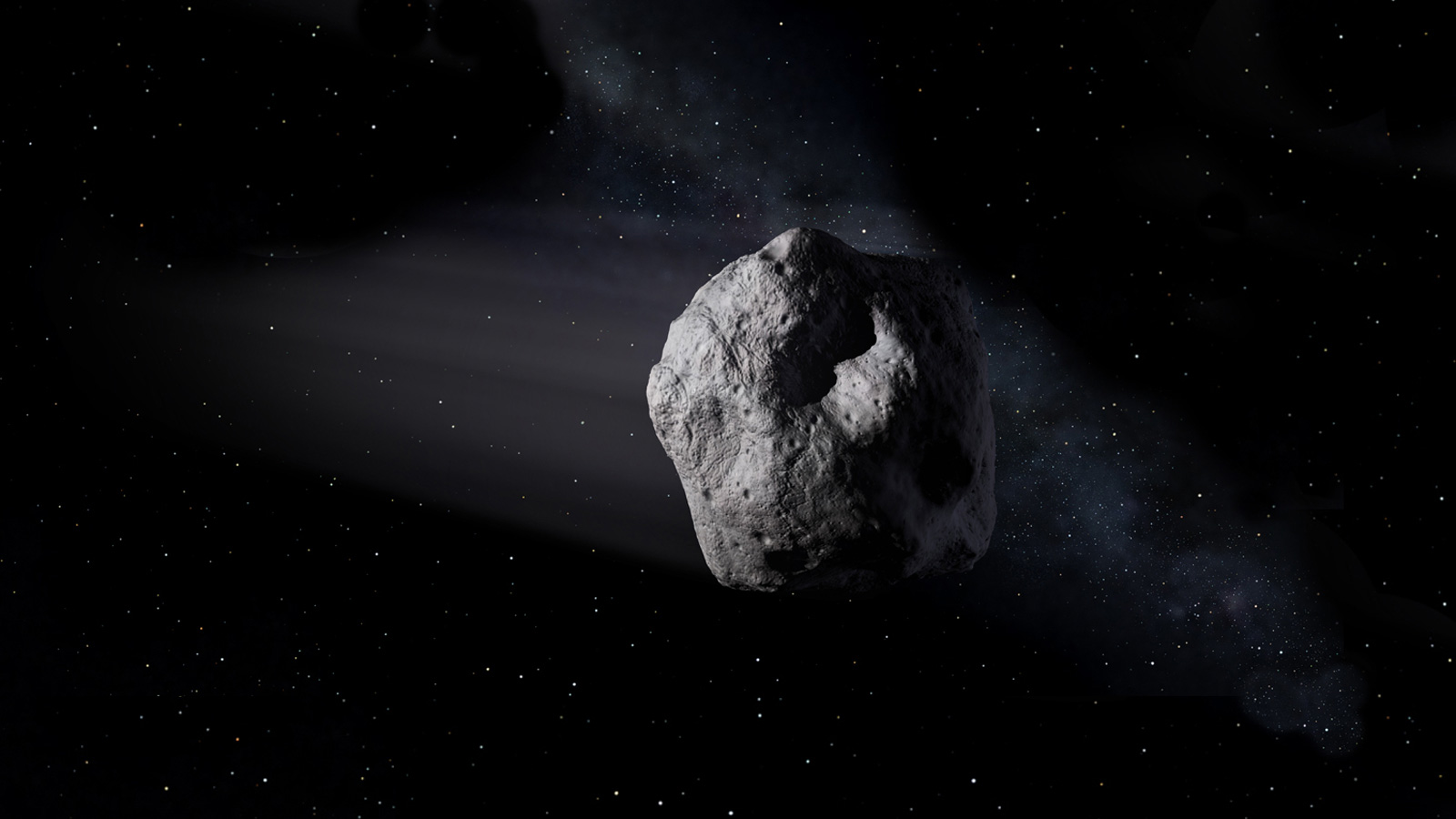Help find weird comet-like asteroids that could reveal solar system secrets

Comets are comets, and asteroids are asteroids … except when they're not. Some asteroids appear to be active, forming the familiar comae, and even tails, of their cometary cousins. Astronomers know of only a few dozen examples of these active asteroids, but they suspect more are out there — and you can join the hunt. The asteroids you spot could unlock secrets about the history of the solar system.
Asteroids are relatively simple. The leftover bits of stillborn rocky planets, they are rich in carbon, iron and other heavier elements. They're basically just big balls of rock.
Comets, however, are much more active. They're a mixed bag of ices and looser, lighter materials that formed in the outer edges of the solar system during its infancy. Because of their lighter elements, when comets get too close to the sun, they become agitated, with the light elements sublimating from the surface to form a coma, and sometimes even a tail of gas that can stretch for millions of miles.
Related: Comets vs. asteroids: How do these rocky objects compare?
So asteroids and comets are very different. But in 1950, astronomers found the first-ever signs of activity around an unexpected place. They discovered that asteroid (4015) Wilson-Harrington has a coma, just like a comet does. But the object definitely wasn't a comet. It most certainly was an asteroid, given that it had a mostly rocky composition.
In the past 70 years, astronomers have identified fewer than 30 active asteroids, and they still present a major mystery to our understanding of the evolution of the solar system. So how did these small, rocky bodies get enough of the light elements to form a coma or a tail?
Here come the Centaurs
The active asteroids are telling us something important about the history of the solar system. For example, one of the major outstanding mysteries in planetary evolution is how Earth got its water. Our planet originally formed with a lot of water, but most of it either boiled off when Earth's surface was molten or got locked up deep within the mantle. To get water on the planet's surface requires some sort of delivery system. Comets are one obvious vehicle, but there may not have been enough of them wandering through the inner solar system to do the job.
Breaking space news, the latest updates on rocket launches, skywatching events and more!
Maybe active asteroids did the job of enriching Earth, but we have so few examples in the modern solar system that it's too hard to tell.
Thankfully, these active asteroids are not alone. There's another distinct population of small bodies inhabiting the solar system: the Centaurs. These asteroid-like objects sit between the orbits of Jupiter and Neptune. Astronomers think the Centaurs were once members of the Kuiper Belt, a ring of small objects well beyond the orbit of Neptune, that wandered in too close and got captured by the gravity of the giant planets.
The Centaurs themselves share characteristics with both asteroids and comets, forming a sort of hybrid population. Fewer than 20 of them produce visible comae just like comets do. This is especially puzzling, since many of those active Centaurs spend most of their time beyond the orbit of Jupiter, where it should be too cold to sublimate any frozen light elements.
Astronomers need your help
This small but distinct population of active asteroids and Centaurs presents astronomers with many mysteries. For instance, how are the Centaurs active despite being so far from the sun? What do these active objects tell us about the history of light elements during the formation of the solar system?
To answer these questions, we need more data. Surely, more active asteroids are out there, but they are notoriously difficult to detect. Not only are the asteroids relatively small, dim and distant from the sun, but signs of their activity are exceedingly faint. It takes dedicated time and attention to search through catalogs of asteroid images, hunting for signs of a coma or a tail.
This is definitely a task beyond the capabilities of even the most sophisticated automated algorithms — which means it's up to us to find new active asteroids.
A paper recently published to the preprint database arXiv discusses a new citizen-science project to hunt for active asteroids. The project takes images of asteroids from the Dark Energy Survey (DES). Even though the DES telescope was not designed to hunt for asteroids, its imaging capabilities turn out to make it an ideal asteroid finder.
However, to find more active asteroids, somebody needs to look at the images and decide if there's any sign of activity. And here's where you come in: You simply visit activeasteroids.net and click to get started. After a brief tutorial, you can begin flipping through images of asteroids and deciding if you think they're active.
Don't worry; the fate of astronomy doesn't rest entirely on your shoulders. Your answers will be compared against others before getting passed on to the researchers.
With a larger catalog of known active asteroids, astronomers hope to begin characterizing these objects and studying them in more detail. From there, they can begin to understand what these active asteroids might tell us about the history of the solar system.
Follow us on Twitter @Spacedotcom or on Facebook.
Join our Space Forums to keep talking space on the latest missions, night sky and more! And if you have a news tip, correction or comment, let us know at: community@space.com.

Paul M. Sutter is a cosmologist at Johns Hopkins University, host of Ask a Spaceman, and author of How to Die in Space.
